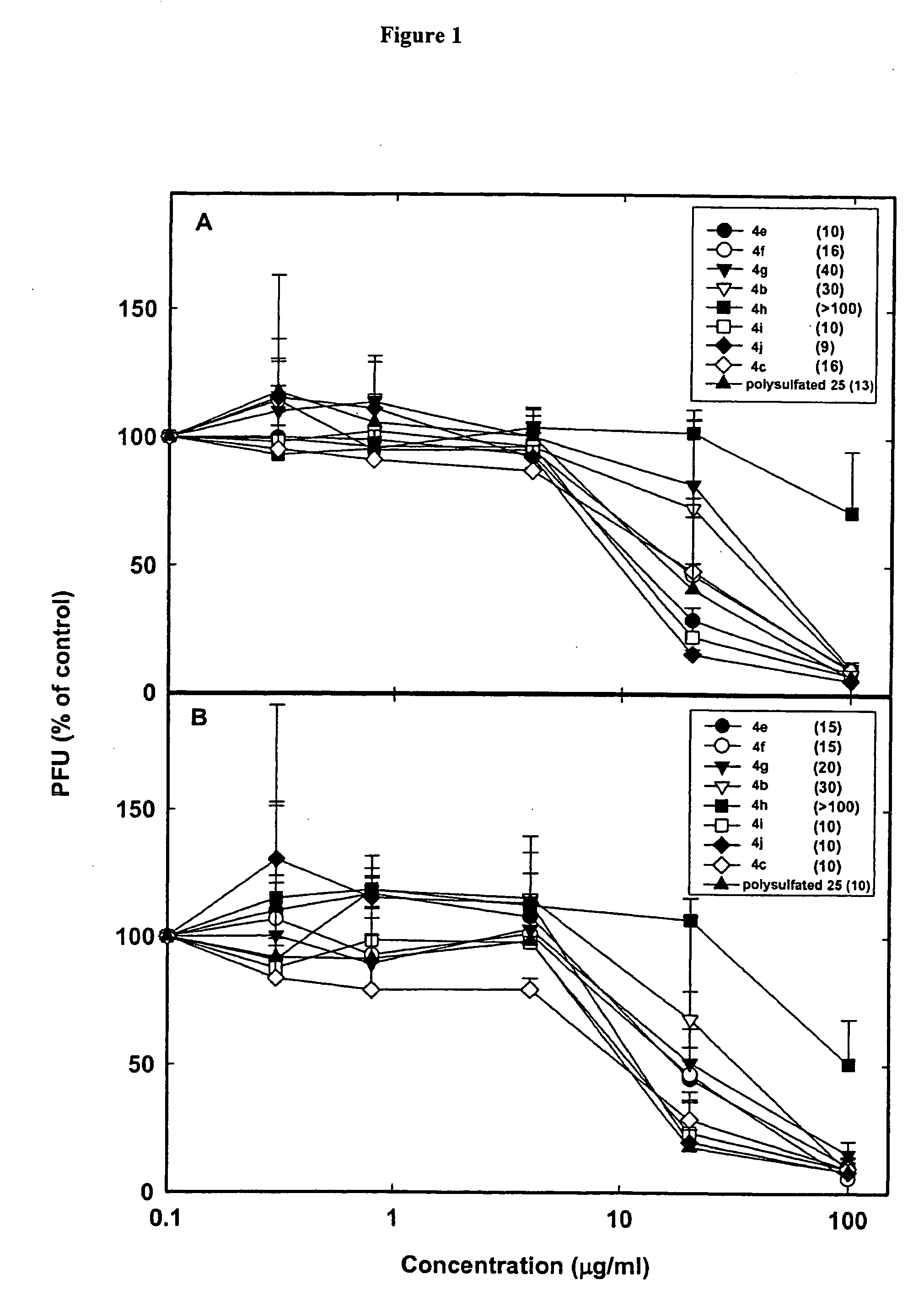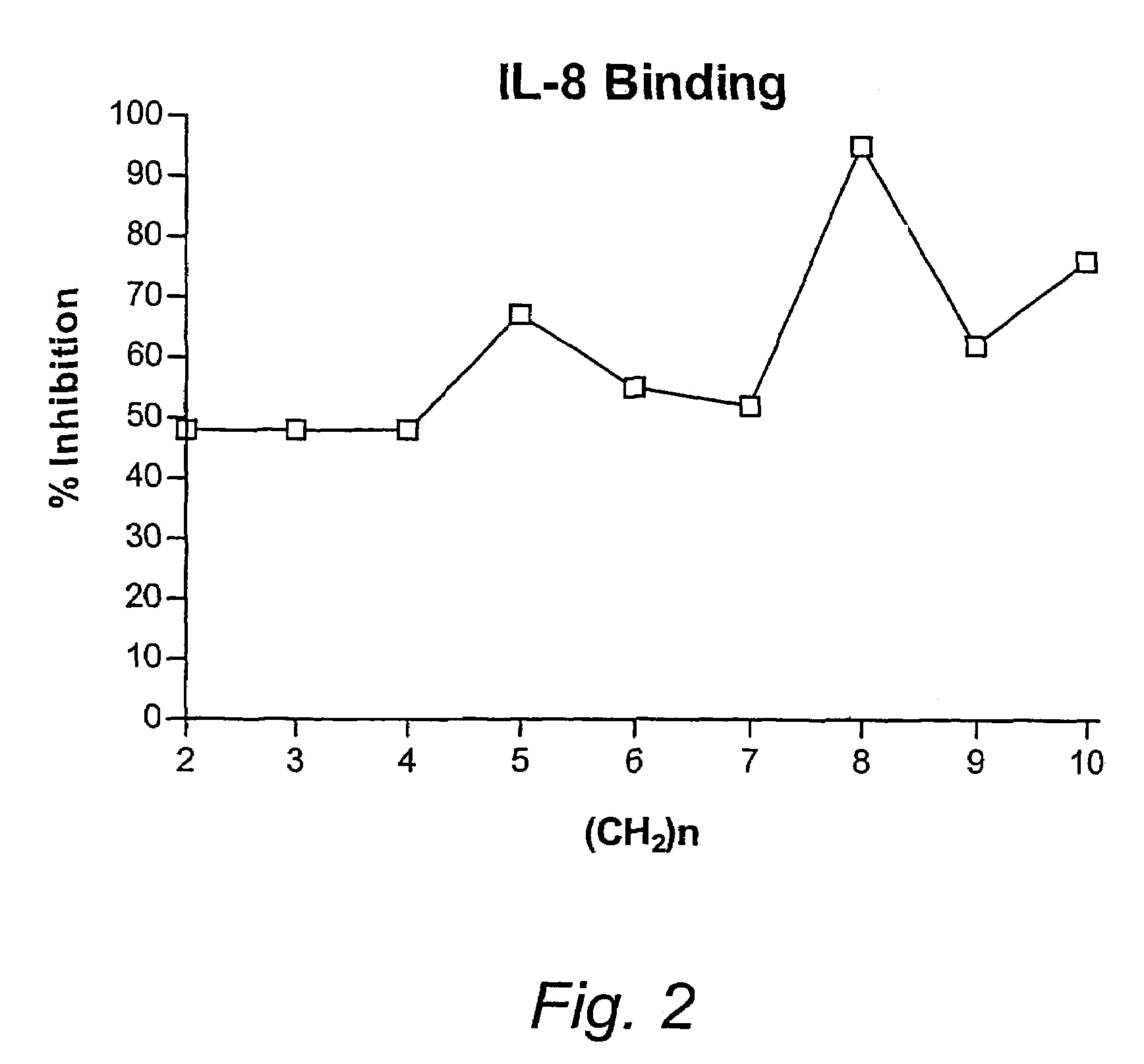Linked cyclitols and their polysulfated derivatives
a technology of cyclitols and polysulfates, applied in the field of compounds, can solve the problems of unfavorable metabolic profiles and hydrolytic cleavage, and achieve the effect of severe side effects
- Summary
- Abstract
- Description
- Claims
- Application Information
AI Technical Summary
Benefits of technology
Problems solved by technology
Method used
Image
Examples
example 1
Synthesis of Iodoepoxide 10
Procedure A—m-CPBA in DCM
[0077]Structures of compounds referred to in this synthesis are given below in Scheme 1. To a solution of the diol 7 (25.78 g, 0.108 mol) in 2,2-dimethoxypropane (100 mL) was added p-toluenesulfonic acid monohydrate (1.03 g, 5.42 mmol, 5 mol %). The mixture was stirred in the dark at 18° C. for 1 h. Triethylamine (10 mL) was added, the solution was stirred for a few minutes and evaporated to dryness (Note: the rotovap bath temperature was maintained at 18° C. to avoid Diels-Alder dimerisation of the product). The residue was dissolved in diethyl ether (300 mL), washed with 1 M NaOH (aq. 30 mL), water (30 mL) and dried (MgSO4). Filtration and evaporation gave the acetonide 8 (23.47 g, 78%) as a light-yellow gum.
[0078]The crude diene 8 (3.54 g, 12.7 mmol) obtained as described in the previous paragraph was dissolved in DCM (70 mL) and the solution was cooled in ice-water bath while m-CPBA (70% purity, 6.26 g, 25.4 mmol, 2 eq) was add...
example 2
Synthesis of Class 1 and 2 Compounds
[0083]A representative reaction sequence used to effect preparation of compounds according to the invention that included class 1 compounds is shown in Scheme 1 below and employed the cis-1,2-dihydrocatechol 7 as starting material. The following reagents and conditions were used for the indicated steps of the process: (i) 2,2-Dimethoxypropane, p-TsOH (cat.), 18° C., 1 h; (ii) m-CPBA, DCM, 18° C., 3 days; (iii) various conditions—see following text; (iv) AcCl, Et3N, DCM, 0–18° C., 12 h; (v) CO, MeOH, Pd(OAc)2, bis(diphenylphosphino)ferrocene, DMF, Et3N, 18° C., 40 h.
[0084]
[0085]Compound 7 was readily obtained in large quantity and enantiomerically pure form by the biotransformation of iodobenzene using the genetically engineered micro-organism E. coli JM109 (pDTG601) which over expresses toluene dioxygenase (TDO), the enzyme responsible for this dihydroxylation reaction. In the first step of the reaction sequence, cis-1,2-dihydrocatechol 7 was conv...
example 3
Synthesis of Class 3 Compounds
[0095]The diamide-linked cyclitols 3, which each incorporated four dehydropseudosugar units, were prepared by the pathway shown below in Scheme 4. The following reagents and conditions were used for the indicated steps of the process: (i) BnOH, TfOH (5 mole %), DCM, 0° C., 0.66 h; (ii) CO, MeOH, Pd(OAc)2, bis(diphenylphosphino)ferrocene, DMF, Et3N, 18° C., 40 h; (iii) Compound 10, BF3.Et2O, DCM.−20° C., 2.5 h; (iv) 1,ω-diamine (0.5 mole equiv.), n-Bu3N (1.02 mole equiv.), Pd[0] (3 mole %), DMF, CO, 100° C., 4 h; (v) 1M aq. HCI THF, 18° C., 16 h.
[0096]
[0097]By way of this process, epoxide 10 was subjected to reaction with benzyl alcohol in dichloromethane at 0° C. in the presence of triflic acid and the ensuing trans-diolmono-benzyl ether 26 was carbomethoxylated under the previously described (Pd[0]-catalysed) conditions to give ester 27 (100%). Reaction of the latter compound with epoxide 10 in the presence of 5 mole % BF3.Et2O at −20° C. afforded the ...
PUM
| Property | Measurement | Unit |
|---|---|---|
| temperature | aaaaa | aaaaa |
| temperature | aaaaa | aaaaa |
| temperature | aaaaa | aaaaa |
Abstract
Description
Claims
Application Information
 Login to View More
Login to View More - R&D
- Intellectual Property
- Life Sciences
- Materials
- Tech Scout
- Unparalleled Data Quality
- Higher Quality Content
- 60% Fewer Hallucinations
Browse by: Latest US Patents, China's latest patents, Technical Efficacy Thesaurus, Application Domain, Technology Topic, Popular Technical Reports.
© 2025 PatSnap. All rights reserved.Legal|Privacy policy|Modern Slavery Act Transparency Statement|Sitemap|About US| Contact US: help@patsnap.com



